How many child abductions are from strangers
The Truth About Child Abduction Statistics in 2022
Far from the days of seeing kids show up on the milk carton of your morning cereal, missing children in the United States and worldwide is a deeply concerning issue. Child abduction statistics show that the prevalence of this type of crime is more often than you think, but the perpetrators are who you’d least expect.
It’s easy to get swept away in the myths about who and why children go missing. Less sinister than the news would have you believe, most children go missing because a non-custodial parent has picked them up. While stranger danger is real, it’s not as real as we’ve been made to believe. Check out these latest statistics to find out the truth about kids going missing.
8 Child Abduction Statistics (Editor’s Choice)
- Every year, approximately eight million children are reported missing worldwide
- In the US, 2300 children are reported missing per day
- Strangers abduct less than 1% of missing children
- Parents are accountable for over 90% of abductions
- In the US, nearly 400 000 youth were abducted in 2020
- Every two minutes, a child is reported missing in Europe
- In 2019, Turkey had an abduction rate of 14.
86 cases per 100,000 people
- In Europe, one-third of missing children were found by the police in 2020
General Missing Children Statistics
There are three different types of child abduction: stranger abduction, abduction for the purpose of raising a child, and parental abduction. Millions of children go missing every year, and due to lack of reporting, that instance is likely much more. In recent years, however, the combination of awareness and technology has ensured that almost all children are returned home safely.
1. Around 8 million children are reported missing each year worldwide.
(ICMEC)
According to the latest worldwide missing children statistics, the US accounts for 800,000 missing child cases each year. While many high-profile cases come from the United States, the speculation that child abduction is an American problem is evidently false, with millions more being reported across the globe.
2. 2300 children are reported missing daily in the US.

(Child Find of America)
Missing child reports cover many different situations, including abductions. While some are instances of parental or stranger abduction, other instances include running away, being kicked out, misunderstandings, or getting lost.
3. In 2020, almost 400 000 youth were abducted in the US.
(Statista)
Based on the latest child abduction statistics for 2020, there were 178 747 teen male kidnapping cases, while the number of girls was much higher, at 209 375 cases. It seems that kidnapping and age do have an inverse relationship. The higher the age of the person, the lower the likelihood of being abducted. For example, less than 160,000 adults were abducted in 2020.
4. Teenagers are the most common age group for abduction.
(MoCHIP)
According to analyses of missing children cases, teenagers are the most likely to be victimized. While the press may be inclined to cover cases of smaller children under the age of 12, statistics show that teens between 12 and 18 account for 80% of all parental and stranger abductions in the US.
5. More than 99% of missing children return home alive.
(Reuters)
While a missing child is always a scene for concern, the vast amount of child abduction cases in recent years have returned home alive. Many point to technological advancement as a leading reason for this positive indication, as well as greater awareness that quick responses make a difference for the lives of abductees.
Stranger abductions are the only outlier in this hopeful outlook. Studies show that of this small group of children every year, 40% of them are killed by the person who took them.
Child Abduction Statistics: Non-Family Kidnapping
Non-family kidnapping is perhaps the most commonly associated type of abduction in this phenomenon. Fear of human trafficking, child abuse, and other crimes is very real in these scenarios, and while they account for a small proportion of all missing child cases, the impact is devastating.
6. Less than 1% of missing children get abducted by strangers.
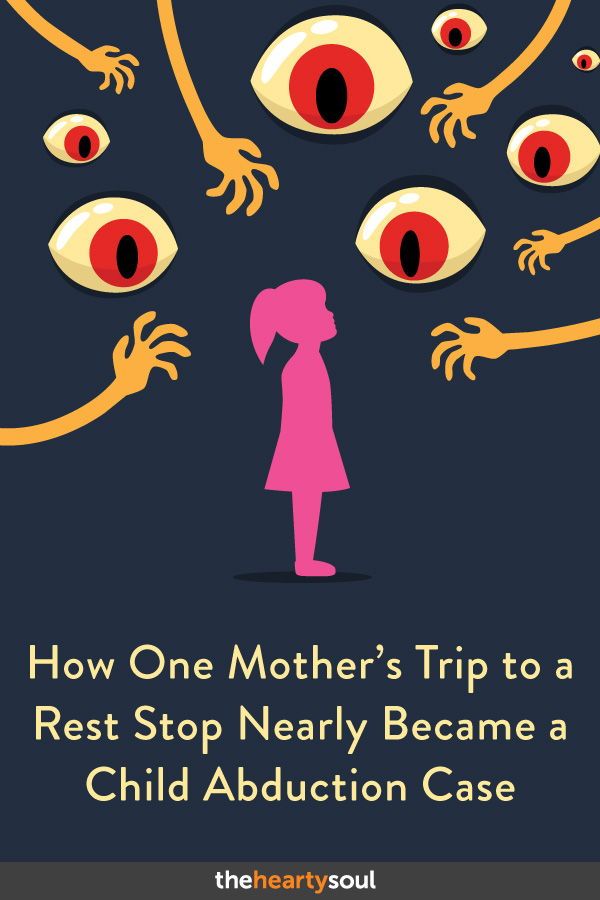
(Missing Kids, Reuters)
When it comes to all cases of children reported missing, less than 1% are taken by someone they don’t know. The vast 91% of missing cases are runaways, as child kidnapping statistics show, while family abductions make up 5% of missing children. Based on reports from the FBI over the last ten years, fewer than 350 children were abducted annually by strangers, despite the high profile news coverage of many cases.
7. 57% of children abducted by strangers make it back home.
(Reuters)
While stranger abductions are more difficult to prevent and intercept, the majority are still returned home alive. Child abduction rates show that since stranger abduction is most often a premeditated act, it involves using techniques to lure the child to come willingly with the perpetrator, only to be victimized later. The nature of this crime makes it much more difficult to catch, especially after more than a few days have passed.
8. One in six runaways are likely victims of child sex trafficking.
(Missing Kids)
Of the 26 500 missing children in 2020, 1 in 6 were likely involved in sex trafficking. Sex trafficking is a pertinent issue in regards to child abduction cases, and the majority of the time, the trafficker is someone close to the child, such as a guardian, parent, neighbor, or friend of the family. One scary statistics says that 20% of abusers have attacked between 10 and 40 minors. Background checking services have become available in recent decades, giving parents extra security about the adults they let into their children’s lives.
9. The first three hours after the abduction is the most crucial for finding a child.
(q13fox)
A fast response to missing child cases is the key to bringing kids home safely. According to children kidnapping statistics, in 74% of abduction-murder cases, the children were harmed or murdered within the first three hours of being abducted.
10. 71% of non-family abductions happen on the way to or from school.
(Reuters, News24)
Statistics show that 71% of non-family abductions happen outdoors. Notably, the most likely time of day for abductions is the afternoon or early in the morning, when children are walking to and from school.
11. Almost all children abducted by strangers are taken by men.
(Kids Health)
Child abduction statistics show that most kidnappers unknown to the victim are male, and two-thirds of victims in this category are young girls.
12. Abducted children often come from low-income households.
(Journalist Secure)
Children from low-income houses are more likely to be abducted and are more likely to have divorced or separated parents. The difference is quite substantial, with 9 in 1000 children experiencing an abduction in two-parent households and 84 in 1000 in single-parent households.
Statistics on Child Abductions by Family
Parental abduction is the main type of kidnapping in the US. Many reports question the labeling of this particular crime as it insinuates something ill-intentioned, while the majority of the time, the child is safe, but a parent has broken a custodial agreement. This mislabeling inflates statistics and creates a perception that stranger danger is around every corner.
Many reports question the labeling of this particular crime as it insinuates something ill-intentioned, while the majority of the time, the child is safe, but a parent has broken a custodial agreement. This mislabeling inflates statistics and creates a perception that stranger danger is around every corner.
13. More than 90% of abductions are committed by a parent.
(Journalist Secure, Reuters)
Parental abduction is the most common type of kidnapping, and statistics on child abduction indicate that 60% of the time, the person is the mother or another female relative.
Even though the abduction by a parent doesn’t have to be a negative experience for the kid, there may be long-term traumatizing effects. That’s especially the case when children experience grief, stress, or conflicts in loyalty because of the abduction.
14. Three in every thousand children are abducted by a family member each year.
(Journalist Secure) (Science Direct)
Almost 5% of children in the US have experienced a parental abduction in their lifetime. 90% of the abductions were conducted by a parent, with 10% reported as another family member. Using a GPS tracker for your kids is becoming a more popular trend, so parents can feel secure knowing where their child is.
90% of the abductions were conducted by a parent, with 10% reported as another family member. Using a GPS tracker for your kids is becoming a more popular trend, so parents can feel secure knowing where their child is.
Child Abduction Statistics by Country
Child abduction is sometimes seen as an American problem. With many high-profile cases that reach global scales, this stereotype is far from the truth. While the US has a fair number of abductions every year, the rest of the world isn’t doing much better. Reporting is an issue with this topic, as many lower-income countries simply don’t keep track of missing children or follow up on reports.
15. In 2019, Turkey was the country with the highest child abduction rate — 14.86 cases per 100,000 people.
(SidmartinBio)
Canada was a close second, with a rate of 13.82 abductions per 100,000 residents, followed by Kuwait, with 11.52 abductions per 100,000 people. Switzerland wasn’t far behind, with 8. 61 abductions per 100,000 people.
61 abductions per 100,000 people.
Abducted child statistics are difficult to estimate, however, as many countries don’t report this activity at all.
16. Around 20 000 children go missing every year in Australia.
(Global Missing Kids)
Australia also deals with a significant missing child problem. With similar barriers to the United States and Canada, this issue is even more severe for indigenous kids. Studies show that 20% of abductions are indigenous teens, and 70% of cases are children living in out-of-home care.
17. In India, around 100 000 children go missing every year.
(Global Missing Kids)
With a population of 1.3 billion, India reports 100,000 missing children every year. It’s speculated that the number of missing children in India is unknowable since most cases are never reported. With a population of 84 million, Germany reports the same number of abductions, granted with a much higher rate. The issue of reporting plagues this problem, making it difficult to draw any concrete conclusions.
18. 20 000 children are abducted each year in China.
(Deutsche Welle) (QZ)
It’s reported that 70,000 people go missing every year in China, 20,000 of which are children. China is a unique case for reporting as parental abduction is not considered a criminal offense, nor is it part of the missing child count. The latest stats on child abduction indicate thousands of children in China are abducted for the purpose of being sold.
19. A child gets reported missing every two minutes in Europe.
(Missing Children)
Europe faces unique challenges to reporting and finding missing children. More than half of reported abduction cases are children who have run away, while 22.7% of abductions were by a parent. The number of missing children per year is also affected by child migration, human trafficking, and non-reporting in several countries.
20. 33% of missing children in Europe were found by the police in 2020.
(Missing Children)
Out of the 19 countries that contributed to the data collection, police found 33% of all missing children in 2020 in Europe. Notably, 38% of children came back on their own, and 20% were brought back by a third party.
Notably, 38% of children came back on their own, and 20% were brought back by a third party.
21. Alaska has the highest number of missing people in the US.
(KREM)
When it comes to child abduction statistics in 2020 by state, Alaska takes the lead. The state not only has the highest number of missing people but also the highest crime rate in the country, almost double the national average crime rate.
Conclusion
Child abduction and missing children is a serious global issue. With many countries facing the same barriers to reporting, tracking, and ultimately finding lost kids, the lack of information has dire consequences. While the most common form of child abduction is by a non-custodial parent, there are other cases that are much more sinister that include human trafficking, child abuse, and long-term abduction.
With technological advancement and awareness-raising, the number of missing children that are found and returned home safely in the US is almost all of them. Through quick response and GPS tracking, many situations are resolved with no harm to the child. By being equipped with the right tools like stun guns and pepper sprays to respond to things that don’t seem right, everyone can help play a role in keeping children safe and at home, where they’re supposed to be.
Through quick response and GPS tracking, many situations are resolved with no harm to the child. By being equipped with the right tools like stun guns and pepper sprays to respond to things that don’t seem right, everyone can help play a role in keeping children safe and at home, where they’re supposed to be.
People Also Ask
How many children are abducted each year?
A large number of children get kidnapped every year. In 2020 alone, almost 400 000 youth were abducted in the US. The majority of cases were girls, accounting for 209, 375, compared to 178, 747 boys. Less than 160,000 adults were kidnapped, showing a relationship between age and likelihood of being abducted. Importantly, statistics indicate that more than 99% of abducted children make it back home alive.
Where do most child abductions occur?
Up to 71% of non-family abductions happen outdoors. The perpetrators usually intercept the child on their way to or from school, in parks, or in the streets. Abductions are most likely to happen in the afternoon or early in the morning. Indigenous and low-income children are most affected by this crime and over-represent in cases where child abuse occurs.
The perpetrators usually intercept the child on their way to or from school, in parks, or in the streets. Abductions are most likely to happen in the afternoon or early in the morning. Indigenous and low-income children are most affected by this crime and over-represent in cases where child abuse occurs.
What state has the highest rate of child abduction?
Alaska is the state with the highest number of missing people, including both adults and children. The state of Arizona takes second place, followed by Oregon, Washington, and Vermont. Taking into consideration population size, California has the highest missing persons rate in the United States. The highest rate of child abduction, by state, is currently unknown.
Who is most likely to abduct a child?
The most common type of child abduction is parental abduction. Parents that are violating custodial agreements are the most likely to commit kidnapping, and in more than 60% of the cases, the parent is either the mother or another female relative.
90% of all missing children get taken by their parents or another family member. For example, 78% of abductors are non-custodial parents in the United States.
How many kids get kidnapped a day?
Globally, around 8 million kids are kidnapped every year. The true numbers are difficult to know, as many countries and cases are never even reported. In the US, 2300 children get taken every single day. During 2020, there were more than 400 000 recorded cases.
What country has the highest child abduction rate?
Due to reporting variances, it’s difficult to say which country has the highest abduction rate of children. In 2019, Turkey had the highest child abduction rate — 14.86 cases per 100,000 people.
Canada took the second place, with a rate of 13.82 abductions per 100,000 residents, followed by Kuwait, with 11.52 abductions per 100,000 people. Switzerland wasn’t far behind, with 8. 61 abductions per 100,000 people.
61 abductions per 100,000 people.
What is the most common age for kidnapping?
Children under the age of 12 may receive the most press due to their vulnerable status in society, but the majority of children who are abducted are teenagers between the age of 12 and 18. Runaways who are believed to be coerced into sex trafficking are considered part of this category, as well as stranger abductions that end in abuse and/or murder.
How many missing children are found?
For the majority of abductions, 99% of children are returned home safely to their guardians without any harm. In Europe, 35% of missing children are recovered by the police. For stranger abductions, the statistics are less promising, with only 57% of children returning home in these cases. Child abduction statistics show that perpetrators of stranger abduction kill their victims in 40% of cases. Reporting, fast response, and technological tools are all contributing factors to quickly returning a child home.
Reporting, fast response, and technological tools are all contributing factors to quickly returning a child home.
Sources:
- Child Find of America
- Deutsche Welle
- Global Missing Kids
- ICMEC
- Journalist Secure
- Kids Health
- KREM
- Missing Children
- Missing Kids
- MoCHIP
- News24
- A-Reuters
- B-Reuters
- SidmartinBio
- Statista
- Q13fox
- QZ
Non-family Abductions & Attempts
Non-family Abductions & AttemptsSkip to main content
Overview Risk Factors By the Numbers What NCMEC is Doing About it
NCMEC receives reports of missing children that fall into one of five case types, including nonfamily abductions. A nonfamily abduction occurs when a child is taken by someone known, but not related, to the child, such as a neighbor or an online acquaintance, or by someone unknown to the child. Nonfamily abductions are the rarest type of case and make up only 1% of the missing children cases reported to NCMEC.
Nonfamily abductions are the rarest type of case and make up only 1% of the missing children cases reported to NCMEC.
Risk Factors
NCMEC collects information concerning attempted abductions of children by individuals unknown to the child. Based on over ten years of data, NCMEC identified that:
- Attempted abductions occur more often when a child is going to or from school or school-related activities
- School-age children are at greatest risk on school days before and after school (7-9 a.m. and 3-4 p.m.) and after dinner time (6-7 p.m.)
- Attempted abductions most often occur on the street while children are playing, walking, or riding bikes
- Younger children are more likely to be playing or walking with a parent or an adult whereas school-age children are more likely to be walking alone or with peers.
- Attempted abductions of older children are more likely to involve a sexual component.
Children evaded abduction in a variety of ways, including:
- Ignoring or refusing the abductor
- Using a cellphone to threaten or intervene
- Fighting back
- Screaming and/or making noise
- Another adult or child intervened
- Abductor left the area or voluntarily released the child
Analysis of Nonfamily Abductions Reported to NCMEC 2016-2020
Published on Oct, 2022
Download
A 10-Year Analysis of Attempted Abductions and Related Incidents
Download
By the Numbers
600 +
attempted abductions were documented by NCMEC in 2020.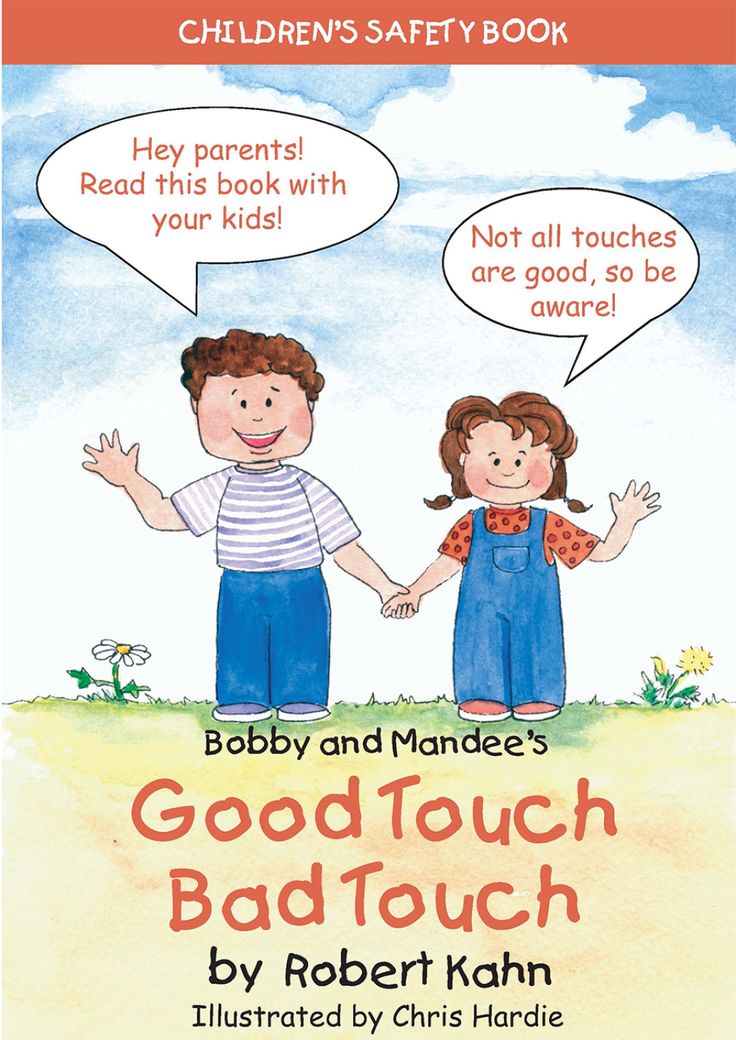
In an analysis of attempted abductions, the most common lures used in attempts were:
- Offering the child a ride
- Offering the child candy or sweets
- Asking the child questions
- Offering the child money
- Using an animal to interest the child
What NCMEC is Doing About it
Preventing Abduction Through Education
NCMEC, in partnership with Honeywell, created the KidSmartz Personal Safety Program, a program that educates families about preventing abduction and empowers children in grades K-5 to practice safer behaviors. The program teaches “The 4 Rules of Personal Safety”: using fun and engaging videos and activities.
Learn more about NCMEC’s Education and Prevention Resources.
The 4 Rules of Personal Safety
- Check first
- Take a friend
- Tell people ‘No’
- Tell a trusted adult
Learning from the Past
NCMEC’s Code Adam Program, created in memory of 6-year-old Adam Walsh who was abducted from a Florida department store, is now one of the largest child safety protocols being implemented in tens of thousands of establishments across the nation, providing critical guidance to employees on how to handle reports of missing children on the premises.
Helping Recover Missing Children
Team Adam is a specialized unit made up of former and retired law enforcement professionals which can be deployed directly to the scene of a child’s disappearance to offer assistance to investigators and families in cases of critically missing children and long-term missing child cases.
The ADAM Program quickly distributes missing child posters to police, news media, schools, businesses, medical centers and other recipients within a specific geographic search areas. The public can also help by signing up to receive missing child alerts in their area.
Sign Up
"Let Mom Find It": 30,000 Children Go Missing Every Year in Russia | Articles
Oleg Leonov, coordinator of the Liza Alert volunteer search and rescue team, reported that more than 30,000 children go missing in Russia every year. Toddlers get lost due to the inattention of their parents, and teenagers run away on their own and sometimes do not want to be found.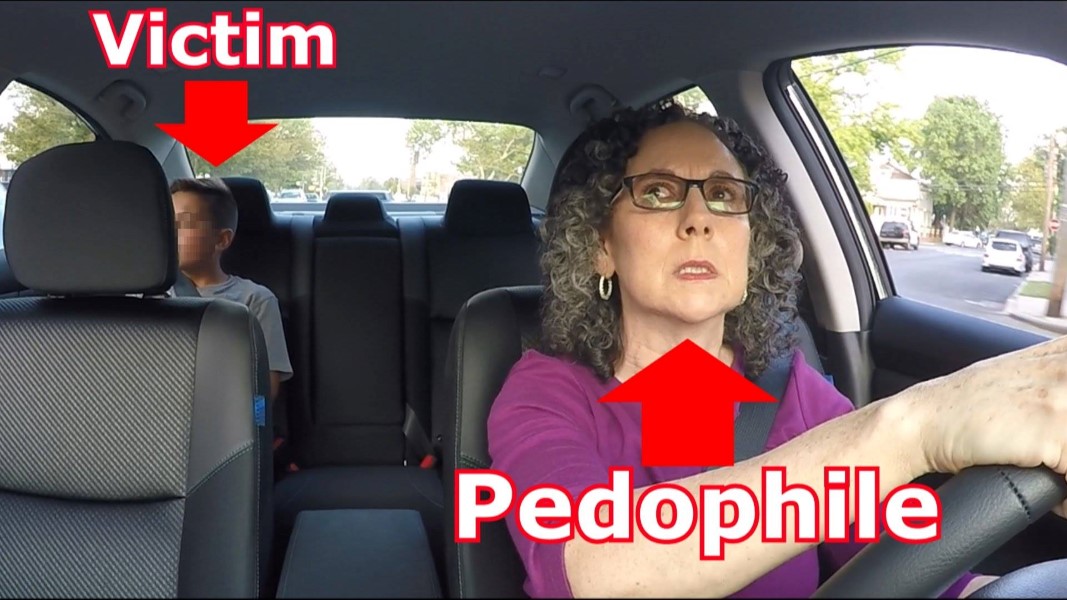 Izvestia found out why children disappear in Russia and how volunteers save them.
Izvestia found out why children disappear in Russia and how volunteers save them.
Missing people
More than 30,000 children go missing in Russia every year. This was told by the coordinator of the search and rescue team "Lisa Alert" Oleg Leonov. According to him, this year the volunteers have already received 3,232 requests to search for children, 2,812 of them were found alive.
As Izvestia was told in the detachment, over 10.5 years of its existence, volunteers received more than 22 thousand applications to search for children. In 2020, there were 6.6 thousand such applications - the work was carried out both in the natural environment and in the cities of the country. 5.7 thousand children were found alive according to these applications.
Photo: vk.com/leonovoleg
- Children disappear everywhere: in the forest and in the city. Small children just accidentally take a few steps in some shopping center from their parents and get lost, there are teenagers who run away from home for various reasons, there are children who have already begun to let go alone to the city, and when they return back, their phone dies , Leonov noted.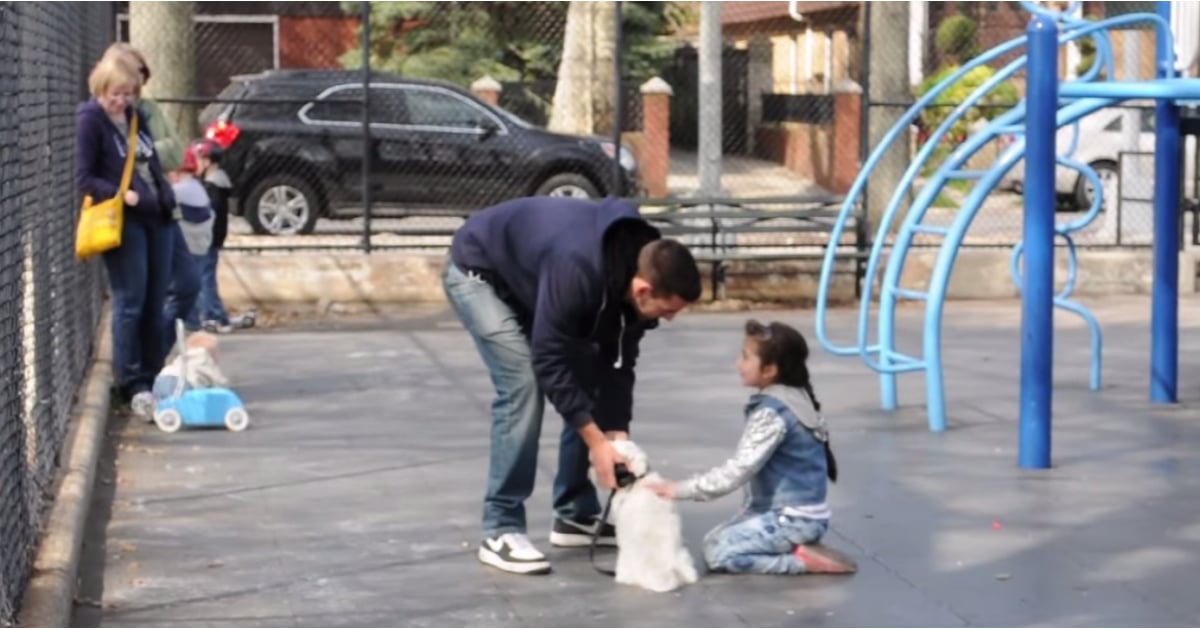
According to the Lisa Alert coordinator, a modern child with a dead phone is a disoriented person who does not understand where to go or go. Due to the fact that children are constantly on the phone, their communication skills are narrowed and they simply do not know how to ask passers-by how to find their way. All in all, according to Oleg Leonov, 180,000 people go missing in Russia every year, 20,000 of whom are never found.
Difficult teenagers
Missing children are divided into two categories: teenagers who have left home and kids who have lost their way, says Ksenia Knorre Dmitrieva, a prevention instructor and head of the press service of the Liza Alert search and rescue team.
- Teenagers from 12 years old, sometimes younger, leave. They run away after quarrels with their parents, they look for adventures, they want to meet friends with whom their parents forbid to communicate,” she says.
Photo: vk.com/leonovoleg
According to Knorre Dmitrieva, children from various families go missing, well-being plays no role in this regard.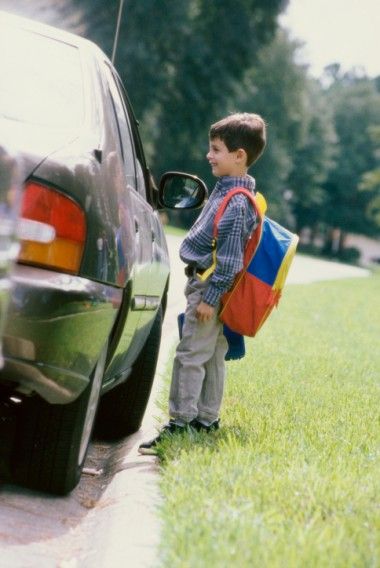 The main thing for parents is to tell the police and volunteers in detail about what preceded the departure, what thoughts and plans the child shared.
The main thing for parents is to tell the police and volunteers in detail about what preceded the departure, what thoughts and plans the child shared.
— Not everyone is ready to admit that there were problems or conflicts in the family. But the lack of information greatly complicates the search - you need to look for the missing child everywhere, and abduction cannot be ruled out. If a parent honestly admits that he didn’t let the teenager go somewhere or scolded him because of the deuce, it’s already easier to work, ”the Izvestia interlocutor notes.
Left unattended
Very often small children get lost if they are overlooked by their parents. They can get lost in the park, in the forest, in the shopping center, or simply go beyond the yard.
— Babies disappear both in nature and in the city. In most cases, they are found alive, but any environment can be dangerous for them, especially one where there are water bodies, says Knorre Dmitrieva.
It is difficult to look for small children - their actions are impulsive and illogical. They can go anywhere - for example, to run after a butterfly or get scared and hide. At the same time, it is a mistake to assume that the baby will not be able to go far. Ksenia recalls a tragic incident when a two-year-old girl was found drowned 7 km from the place where she got lost.
They can go anywhere - for example, to run after a butterfly or get scared and hide. At the same time, it is a mistake to assume that the baby will not be able to go far. Ksenia recalls a tragic incident when a two-year-old girl was found drowned 7 km from the place where she got lost.
Photo: vk.com/leonovoleg
The search for the missing kids begins as quickly as possible: if an adult who gets lost in the forest can safely spend several days there, then a child in the wild will be in danger every hour. It can fall into a pond, freeze or die from dehydration.
Small children are searched for with the help of orientation (with their help, up to 40% of the missing are found), search for witnesses and combing the area. There is always a woman in every group of volunteers: it is more likely that a lost child will respond to her voice.
As Ksenia Dmitrieva explains, orientations also work well in the case of kidnapping children - there were cases when criminals saw information about a missing child in the media and, frightened, immediately released him.
What to do?
The most valuable thing during a child's search is time. The sooner you find the child, the less likely it is that he will get into trouble or, if he was kidnapped, that the perpetrator will have time to do something.
Therefore, if you have a missing child, you need to act immediately. You can wait half an hour for a teenager who does not return from school on time, and then start calling his friends, classmates, relatives, teachers or coaches.
- It is desirable that several people call, at this time someone went along the route from school to home, someone contacted the police. An application to the authorities is a prerequisite for starting volunteer work. It is not necessary that the applicant be a close relative, it can be anyone, says Knorre Dmitrieva.
Photo: vk.com/leonovoleg
Next, the police join the search: they interview eyewitnesses, look at the recordings from CCTV cameras, in some cases they use service dogs. Volunteers, meanwhile, go through any places where the missing person may be, comb bushes and forest belts, look through abandoned houses.
Volunteers, meanwhile, go through any places where the missing person may be, comb bushes and forest belts, look through abandoned houses.
— The biggest mistake parents make is to be embarrassed to ask for help and wait for the child to return on its own. If he comes back and says that he just played with friends, everyone will only be happy. No one will scold you for a “false” call, no one will fine you,” the Izvestia interlocutor notes.
Dangers in nature
According to Knorre Dmitrieva, most often missing children are found in shopping centers, on city streets, with friends or even in neighboring entrances. It also happens that teenagers go on unauthorized trips to other cities .
— Children are found not only by volunteers, but also by attentive shopping center security guards or passers-by who know that a child is being searched for. Such people can call either us or the police,” she says.
As an example, an employee of Liza Alert cites a story when a missing child was found in 40 seconds: first, parents who lost a five-year-old baby during a walk in Neskuchny Garden in Moscow contacted the detachment, and after them, a girl who noticed a lonely standing boy.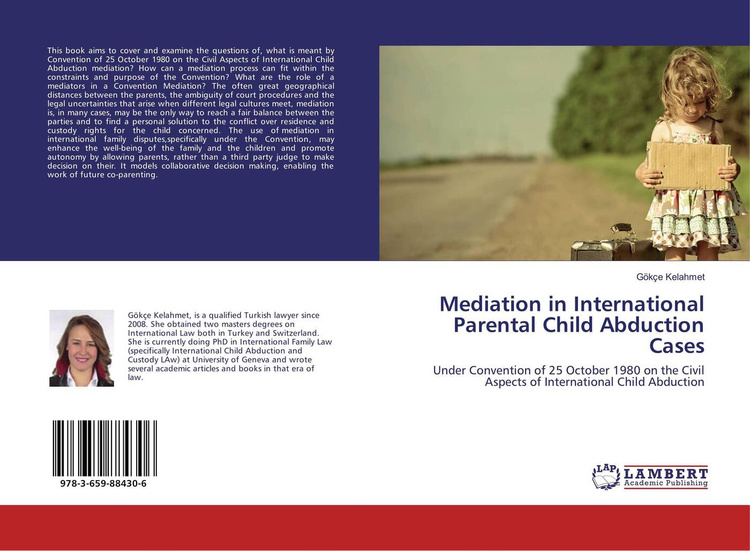 So, thanks to her attentiveness and responsiveness, the child was quickly returned to the family.
So, thanks to her attentiveness and responsiveness, the child was quickly returned to the family.
Photo: vk.com/leonovoleg
According to the statistics of "Lisa Alert", only two cases out of a hundred end tragically. In nature, the greatest danger for the missing is water: 8 out of 10 dead children drown. As for cities, the main causes of death there are accidents and suicides.
- Sometimes dead children are found in village toilets, transformer boxes, abandoned buildings, discarded refrigerators and in landfills, says Knorre Dmitrieva.
Any parent can lose sight of a child, and the cost of such a mistake can be very high. Therefore, it is best to follow simple preventive measures: keep an eye on doors, windows and gates, close septic tanks and country toilets.
- It is necessary to explain to the child from an early age what to do if he gets lost. He must stand still and not go anywhere with anyone - only if a police officer approaches. In addition, it would not be superfluous to stick a patch on the child’s clothes with his first and last name and learn with him the phone number of mom or dad, the expert notes.
In addition, it would not be superfluous to stick a patch on the child’s clothes with his first and last name and learn with him the phone number of mom or dad, the expert notes.
A geolocation app on your phone or a watch with a tracker will be a good helper - thanks to them, parents can always track where the child is. The main thing is not to forget to charge them.
But with teenagers, only calm and trusting relationships will help, adds Knorre Dmitrieva. The best thing a parent can do is to talk to the child about what is bothering him and be attentive to him.
Why 15 out of 17 children will leave with a stranger, even if they are strictly forbidden to do so / Bright Side
The Lisa Alert search team conducted another social experiment in Saratov in the summer of 2019: strangers tried to take children between the ages of 3 and 12 from the playground (of course, with the permission of their parents). Of the 17 participants in the experiment, 15 trusted a stranger, and only 2 6-year-olds flatly refused to leave the yard.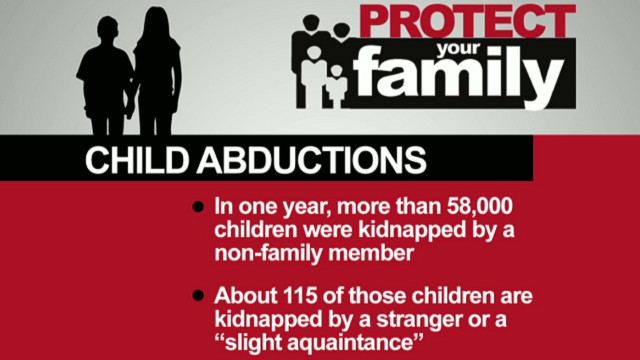
Bright Side reminds us that about 0.5 million children go missing every year in the UK alone (which is more than the entire population of Iceland), and discusses why this happens.
How children are taken away from crowded playgrounds
One of the most frightening observations during almost every experiment in trying to take children away is the astonishing indifference of others. According to the volunteers of "Liza Alert", they take the guys away from the crowded playgrounds - and not a single adult who noticed this tried to find out what was happening.
At the same time, the "kidnappers" use quite common wording, which should alert anyone:
- "Shall I buy you some cotton candy?"
- "Let's go feed the pigeons?"
- "There are squirrels running around. Let's see?"
- "Your dad asked me to bring you. Let's go?"
Often there are requests to help get little kittens or puppies out from under the car or out of the basement.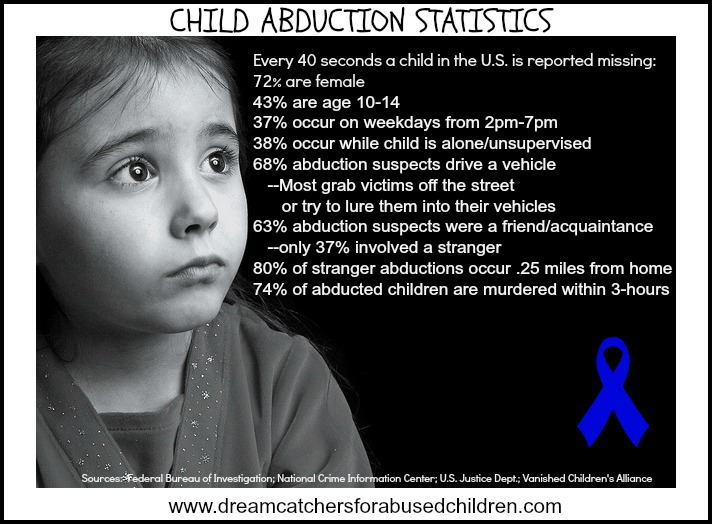 It is not uncommon for criminals to pose as police officers, doctors, or firefighters.
It is not uncommon for criminals to pose as police officers, doctors, or firefighters.
The abductor's motivation can be different: usually he wants to harm or steal for the purpose of long-term retention. The story can end badly in both cases, although there are many precedents when, even after 10 years of imprisonment, children who have already become adults escaped from the kidnappers and returned home.
One of the rarest causes is stealing for adoption. Newly born parents usually do not suspect how the child got to them. There is even a special direction in this business - abduction before birth. They steal embryos stored in special centers. The legislation considers such theft to be the kidnapping of a child.
Even adult children leave with strangers
The chance that a child will leave with a stranger is greatly increased if a woman or teenager plays the role of the kidnapper. In addition, everyone intuitively imagines the criminal as a hero from a horror movie: he is tall, malevolent and very evil.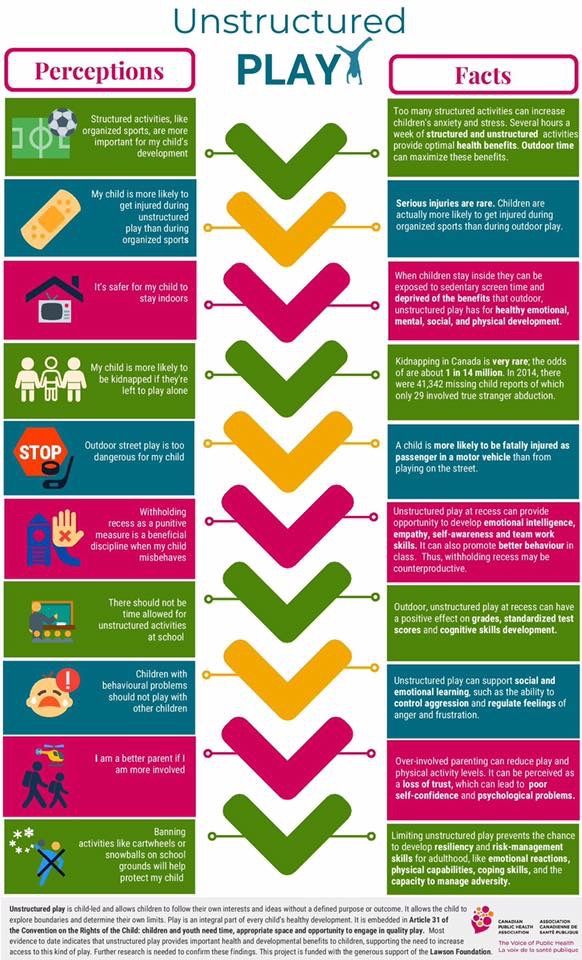 It is necessary to explain that both a grandmother in a headscarf and a girl with a bow on a long braid can turn out to be a villain.
It is necessary to explain that both a grandmother in a headscarf and a girl with a bow on a long braid can turn out to be a villain.
Children who participated in the Saratov experiment, to the question "why did you leave?" answered differently:
- "My aunt said to go with her."
- "And I guessed that it was an experiment!"
- "I thought my mother was waiting for me there."
The situation seems even more alarming if we remember that the subjects knew perfectly well what the consequences of communicating with a stranger could be. Explanatory conversations were held with each of them more than once, from which, apparently, there is no special sense.
The child needs to decipher which strangers are dangerous. After all, the sellers in the stores, and the neighbors on the porch, and other mothers on the site are strangers. Therefore, the rule "never talk to strangers" in itself is not feasible.
One way to solve the problem is to organize a kind of parent committee. In turn, adults are on duty in the yard and watch all the children at once.
In turn, adults are on duty in the yard and watch all the children at once.
Periodic examinations of children will not be superfluous: ask how they would act in this or that situation. One day, such training could save their lives, as happened to two American children 8 and 10 years old in the spring of 2019.of the year. The brother and sister were in the car waiting for their grandmother when a young guy jumped into the driver's seat. The 8-year-old boy reacted instantly: he opened the door and ran out into the street, and then grabbed his sister by the hand and helped her out. The perpetrator was soon caught.
What prevents the child from escaping and escaping
Another disturbing remark of the organizers of the experiment: even when the victim already understands that no squirrels will be shown to her, she does not try to escape. To the reasonable question of parents “why?” the children vaguely answered that they were ashamed to scream or call for help.
The instruction to “shout if you are in danger” usually remains an empty phrase for a child. He has a million questions: what to shout? how loud? what if no one hears? what if he hears, but does not help? One of the possible solutions is to practice "vociferous screams" ("Help!", "I don't know him!", "Step back!") in wooded or park areas. The purpose of such training is to remove the phenomenon of childish shyness.
In addition to embarrassment, the child is usually afraid of seeming stupid to a stranger. In the head of a small person, the situation looks something like this: “And if he doesn’t want to do anything bad to me, and I scream, then I will look like a fool and everyone will start laughing at me.” An additional deterrent is the unquestioned authority of any adult, which grows from our favorite phrases: “adults are smarter!”, “Be quiet when adults are talking!”, “This is for adults, not for children!” and so on.
Some tips from US experts on finding missing children
- Don't sew a name tag on your child's clothes.













